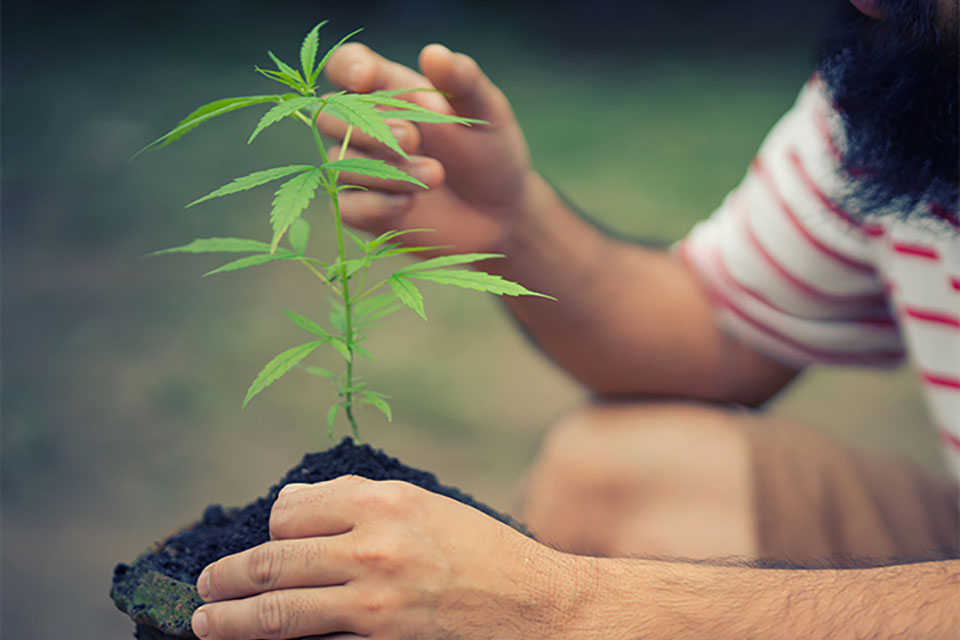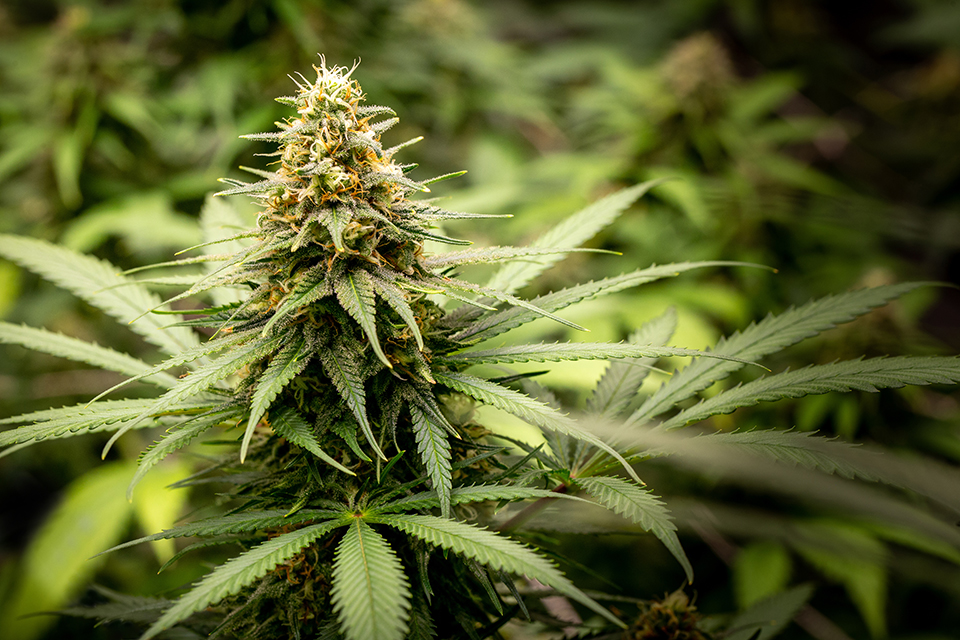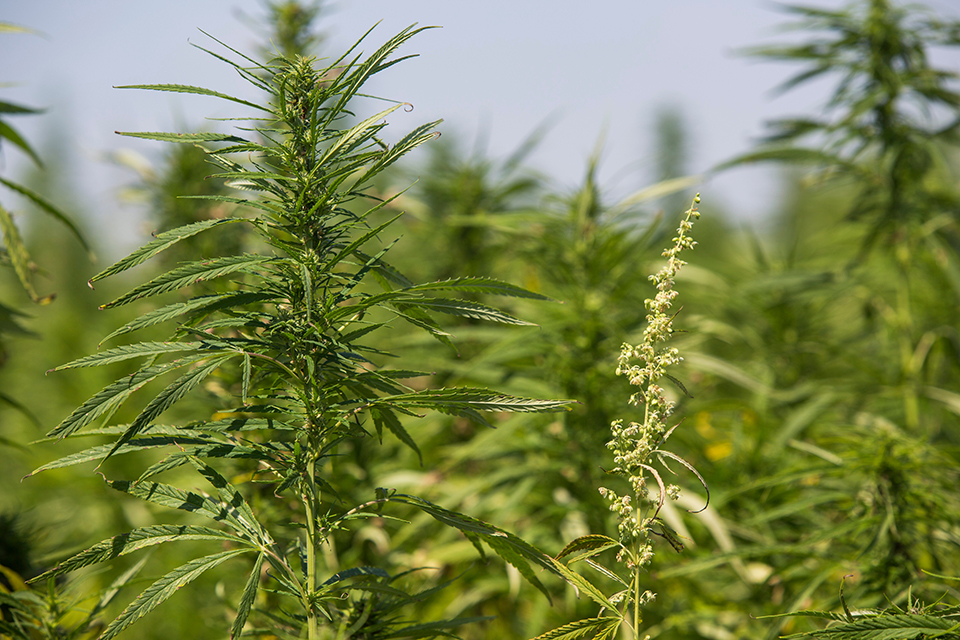
Transitioning Cannabis From Vegetative To Flowering
In the wild, cannabis plants thrive in hot sunny weather. Most strains are short-day plants, meaning they need to have at least twelve hours of darkness to get the message that it’s time to flower. In nature, this is achieved as the earth slowly tilts away from the sun as high spring becomes summer. The change in daylight hours signals to the plant that winter is coming and it’s time to stop producing leaves and start producing reproductive parts. With our selective breeding of cannabis, this process has intensified, and now it happens artificially over just a few weeks. Growers call this flipping or switching the plant.
The difference between a mediocre yield and a spectacular yield is in how you treat the plants in the transition space between vegetative and flowering phases. Knowing when to flip the switch, especially in the case of indoor growing, is everything. It’s also vital to be giving your plants the right food and environment when they’re being flipped, as both will make a huge impact on their yield. It’s not just about lighting and timing, it’s about whether the conditions of your space are right for supporting the gorgeous buds you’re hoping to get from the plant. It is advised to pick the strains you’ll be growing based on what kind of space you have. A large warehouse with plenty of room for fifteen-foot sativas and an army of gardeners will be flipped differently than a couple of indicas on the back porch.
When Should I Switch My Cannabis Plants From Veg to Flowering?
Common wisdom concludes that you should wait sixty days from germination to make the switch from the vegetative phase to flowering. This gives plants ample time to build strong root systems before starting their flower production. Knowing when to switch your plants is a much more complicated decision that should be based more on the plant’s specific situation rather than just common wisdom. The golden rule is to keep your plants in the vegetative phase for as long as possible to maximize their yields without risking burning your crops. Using LEDs instead of traditional grow lights can help but the genetics and environment you are working with will determine how long your plants stay in the vegging phase. Pure sativas should be flipped when they have filled one-third of the growing space. Indicas and hybrids should be flipped when they have taken up fifty percent of the space. When using a Screen of Green (ScrOG) technique to make a bunch of little plants flower early, flip them once they have all reached a foot in height maximum.
If your plant has recently gone through any kind of stress, it’s best to let it recover first. If your plants have had issues with pests or mold, eradicate these and give them a week or two to recover before flipping. It is much harder to get rid of infections and pests when a plant is flowering. It’s the same if you are using any kind of low or high-stress technique. Let the plants recover before flipping them.
How Do I transition from vegetative to flowering?
When you are sure that it’s time to flip your plants, start by switching their photoperiod. Instead of sixteen hours of daylight to eight hours of darkness, or however, the strain likes it, switch to twelve hours of daylight, and twelve hours of darkness. Indoors, this means switching lighting schedules, and outdoors it’s all about blackout tents. Let the plant adjust to the new schedule for a few days before gradually adjusting the temperature, humidity, nutrients, light intensity, CO2 availability, and airflow.
Cannabis plants are wind pollinated. To trick them into giving you their absolute best and most resinous flowers, it has to feel like the best possible weather for viable pollen to be blowing past. That means reducing the relative humidity in the room by at least ten percent, from a range of fifty to seventy percent down to between forty and sixty. The temperature can be anywhere between eighty and sixty-eight degrees Fahrenheit depending on the strain. Increase the amount of light intensity over the first two weeks of flowering, from roughly five hundred and fifty lumens to eight hundred. As you switch the plant, give it a boost of phosphorus and magnesium while cutting down the amount of nitrogen. CO2 and air circulation can be increased, giving the plants plenty of fresh air to work with. All of these will have to be done gradually, in small increments throughout the first two weeks of flowering. You should start to see changes after the first week.
What Else Should I Consider?
Deciding when to flip stages should be a decision tailor-made for your plants. What’s best for them will depend on the strain, the space they are growing in, and the individual journey of the plants. It sounds complicated but when you’ve developed a relationship with some plants and you can tell when they’re thriving or stressed, making the choice becomes intuitive. Timing can tell you a lot about whether it’s ready but it’s ultimately about where the plant is at.
It’s good practice to make sure your plants are always more than a foot away from the lights. This is much less important when using nothing but LEDs since they give off considerably less light, but space is still important. A hydroponic table full of small indicas will be a very different beast than a backyard of large sativas. It’s also vital to not switch a plant while it’s in the throes of a crisis or recovering from a stressful time. Giving them a few extra weeks to rest will almost always benefit them. As you begin to switch the environment, watch your plants carefully for signs of stress like discoloration of leaves, drooping, or slower than normal growth. At this point in the process, it’s important to have switched the nutrients you are giving to your plants. Make sure to have stepped down nitrogen and boosted potassium and phosphorus. Most plants, especially modern hybrids, also like a little bit of extra calcium and magnesium just as they’re being switched to flowering.
Can I Change From Veg To Flower Outdoors?
Many outdoor growers prefer to use auto-flowering seeds which will start to flower on their own after a set amount of time. It can be anywhere from two to eight weeks after they’ve sprouted. Automatic flowering plants don’t need shorter days to tell them when to flower. Plants that rely on photoperiod changes will, in theory, switch to flowering naturally outdoors after midsummer when daylight hours start to get shorter. But this slow and subtle change is often not enough to produce the dramatic results and massive yields that indoor growers can create. To make the most of growing photoperiod seeds outdoors, it’s important to keep all sources of light away from your plants for at least twelve hours a day. If the growing conditions outdoors in your area don’t provide that, it’s important to create it.
While making your own blackout curtains seems tempting, using black material will absorb too much heat and can damage your plant severely if you’re not careful. Common materials used include foam core boards that snap into place to cover greenhouse windows or rubber-coated fabric that’s put over a frame and holds in heat in cooler climates. Many greenhouse and outdoor growers are fond of a product called panda film, which bounces light and heat off of its white, outside-facing side and provides total darkness inside. It’s also watertight, which can help protect outdoor plants from nighttime summer rainstorms. Fit this film tightly over a lightweight frame house, and provide forced ventilation to keep humidity down.
How Will I Know My Plants Are In The Flowering Stage?
Flowering plants will start growing very quickly, especially if you’ve been feeding them properly and keeping the growing area completely dark at night. They’re bulking up to support the flower buds that are on their way! Plants in the early flowering phase like a lot of water to support this growth but it’s important to keep humidity down. Watering after the lights have been turned off for the night is highly recommended. If you are using a growing array with a lot of red LED lights, you can water while those are still on so you can see what you are doing.
Plants that have entered the flowering stage will start to grow countless white pistil hairs. Feminized seeds will, ninety-nine percent of the time, begin to grow little flames of pre-flowers with long pistil hair coming off of them as well. If you see any that appear to be growing the opposite way, like little balls growing off of small stems, these are males and need to be taken away from your females right away to avoid pollination. The females will begin to grow lighter at the top of their stems, in the center of their new growth, as the hair coalesces and become young buds. This is also the point at which your plant might start to smell like cannabis. If you aren’t already scrubbing the air coming out of your indoor growing area with charcoal or a HEPA filter, now is the time to start.
Will Keeping Them In Veg For Longer Mean Bigger Yields?
The short answer is that yes, keeping plants in the vegetative stage for around nine weeks will typically increase the size of their yield. However, it’s all about making sure that your plants have what they need to support large yields in general, not just waiting on a date. Depending on the growing situation, it can hurt your crop to wait too long to make the switch. For example, in a space where there is not much room between your plants and your lights, leaving your plants to get too high before flipping them can lead to buds getting burned and crops being less than awesome.
When growing using a Sea of Green (SOG) technique, where many small plants are flipped early to focus on growing one big cola each, making the switch while plants are roughly a foot tall is preferred to letting them get any bigger. Large plants in a SOG don’t leave room for big colas to develop and stay healthy unless there is enough space between the lights and the plants. Many growers focusing on cultivating just a few plants will swear by extending the vegetation stage up to sixty days to get strong yields. If your plants have been transplanted, have been newly stress trained, or have otherwise been recently dealing with big changes, it’s best to wait at least two weeks to switch them. The most important factors are how strong your root systems are and whether the plant can handle the stress of flipping.
Does Growing Sativa Or Indica Affect Veg To Flower?
There are often differences in the ways that pure sativas and indicas affect us but the biggest differences between sativas and indicas are in how they grow. Sativas are traditionally thought of as long, leggy plants that can get up to fifteen feet high in optimal conditions. Indicas are short and bushy, with succulent leaves and a much thicker appearance overall. Most of the genetics on the market now are hybrids, and they can have a mix of sativa and indica attributes determined by their specific lineages and breeding situations.
Pure sativas will typically triple in size while flowering if you feed them properly. Pure indicas will only increase in size by twenty-five to fifty percent. What hybrids will do during the flowering phase will depend on their specific genes but it’s a rule of thumb that they will double in size. All plants will be affected by environmental factors like heat, light, and humidity, what you’re feeding them, what kind of stress they’ve experienced in their lives, and how long you let them vegetate. All cannabis plants, except autoflowers, follow the same steps for flipping. The specifics of what heat, light, and humidity to grow them at will be determined by the strains and the feedback you’ve gotten from the plant. Choosing the right plant for your growing space is the most important consideration when deciding between growing sativas, indicas, or hybrids. If you have the space and manpower for tall high-maintenance plants, go to town!
Does Growing Clones Or Seeds Affect Veg To Flower?
The main thing you are looking to grow by extending your vegetative stage is your root balls, not necessarily the leafy green matter of your plants. Leaves and branches will bulk up during the first two weeks of the flowering stage, so don’t worry too much if you’re seeing a lot of growth in your roots but not your leaves. Clones can get big pretty fast once they’re flipped, provided their roots are sturdy and strong. What a majestic yield comes down to is whether the roots are strong enough to take in the nutrients to feed large inflorescences. Some people who grow from clones think that they can somehow affect the number of nodes on their branches by extending the vegetative phase. However, this growth pattern is based on genetics and not the environment.
Only seeds can make taproots, which are the real motherload when it comes to getting large yields out of one plant. It’s possible to nurture clones to develop robust root systems. Growing clones differs from growing with seeds, especially when it comes to the flip. Earlier we mentioned the Sea of Green method, where typically indica varieties are flipped early to get one huge cola each. This method is great for clones as well because they can generally be flipped earlier than seedlings thanks to their age. If you want to maximize yields on only a few plants, use seeds.
Can I Go From Flower Back To Veg?
Uninterrupted dark periods are important for photoperiod plants. It’s possible to accidentally send them back to the vegetative stage from flowering by keeping something as small as an LED in the growing tent or having a light leak that goes undetected for a night or two. Signs that you’ve accidentally stepped your plant back include new leaves that grow strangely. They will curl or have smooth edges and generally stop looking like stereotypical weed leaves. Buds will also stop developing. If you’ve just started to flower your plant and something goes wrong, the changes might show up in just a week. If the plant is deeply into flowering and there is a light leak, the change might not happen for a little while.
Regenerating a plant after its first harvest on purpose, on the other hand, is a great way to extend your plant’s life. Re-vegging can get you more weed from the same plant, and it can help to continue genetic lines that might be in danger of dying out without clones. There are all sorts of benefits to this, including a shortened second vegetative stage since the root system of the plant is already well developed. These plants can also be cloned or monster cropped, where clippings are taken from a flowering plant and used to create a host of bushier, faster flowering clones. The setbacks to growing this way include how hard it can be to pull off, and the stress it puts on the plant. It’s tough but sometimes worth it!



